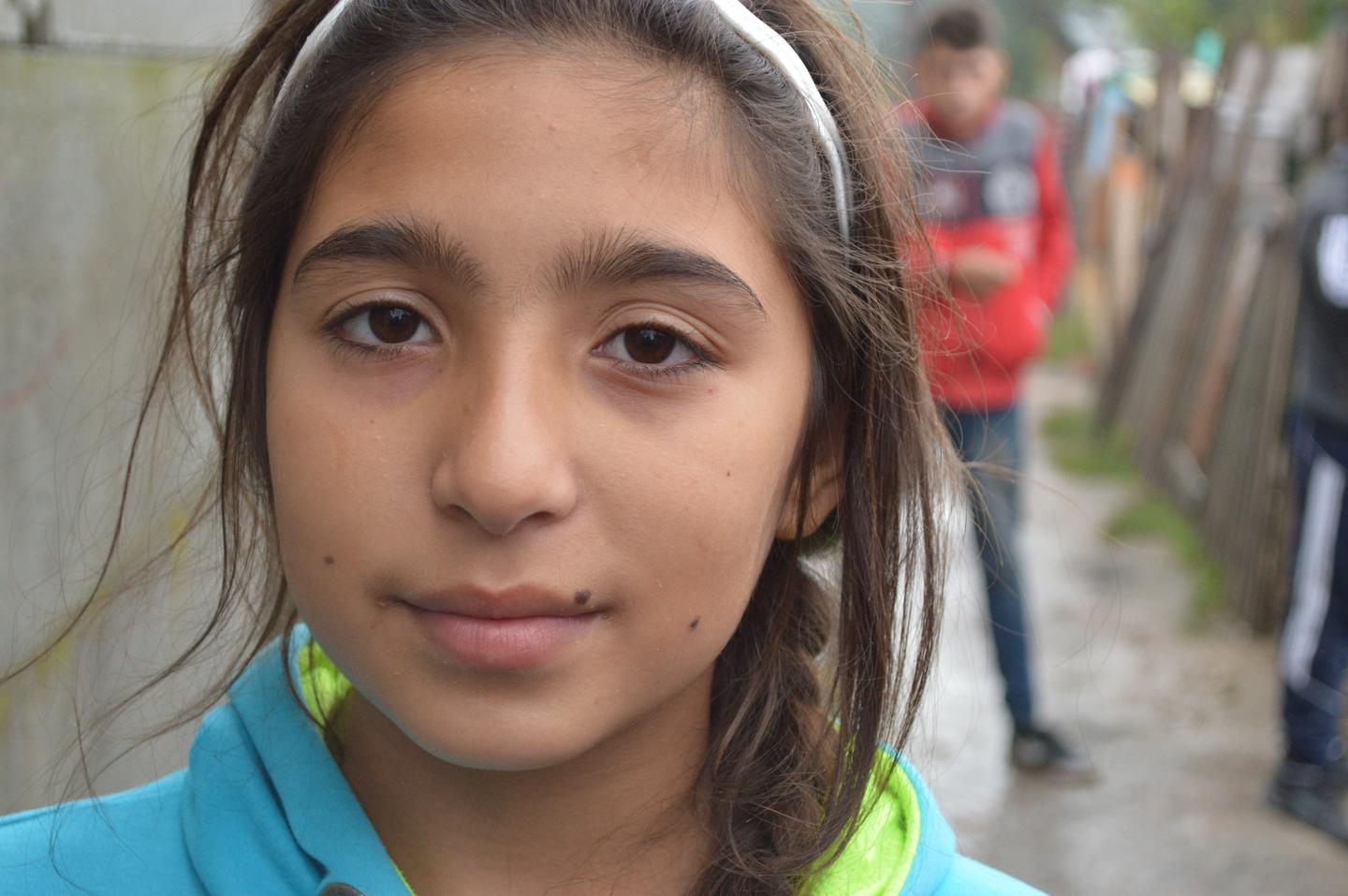In the outskirts of the village of Kovatchevci, about 40 km from the Bulgarian capital Sofia lies the Roma “mahala” (quarter). About 300 people live in 43 houses, only three of them with running water. Most of the families are marginalised, with no education, no jobs and rely on social benefits. Many girls drop out of school due to early marriages and pregnancies. Most of them never see a doctor before giving birth.
A child giving birth to children
Elena, the new health mediator in the village, started working as a volunteer to help establish a self-help group of 13 women. They were of different ages – between 18 and 55 years old – and mothers of many children.
«In the beginning nobody wanted to talk about birth control or sexually transmitted diseases. Women were ashamed and left the meetings», Elena said. «Our people are illiterate and they did not want to talk with outsiders, but they knew and trusted me. Gradually, we started talking with them about the consequences of early marriages and early pregnancies – a child giving birth to children one after the other. »
One of many programmes to improve Roma communities
Elena’s village is included in the project “Mission possible”, funded under the Public Health Programme of the EEA and Norway Grants, which aims to reduce social inequality by improving the sexual and reproductive health of young people.
The programme is one of many initiatives from Norway, Iceland, and Liechtenstein that aim to improve the situation of Europe’s Roma communities. In total, an indicative minimum of €50 million is allocated through the EEA and Norway Grants to eradicate Roma exclusion and discrimination in countries with a sizeable Roma minority, i.e. Bulgaria, the Czech Republic, Hungary, Romania and Slovakia.
Positive changes triggered by the reviewed projects
The EEA and Norway Grants requested an assessment focusing on the most successful projects related to Roma in order to better understand what works well and why. The assessment report was completed recently, and the evidence gathered by the assessment outlines substantial visible achievements and processes of positive changes triggered by the reviewed projects.
The report assessed samples of four programmes in Bulgaria and five programmes in Romania, and firmly concludes that the main achievements are in the areas of health, education, jobs, legal rights and local authorities and institutions. Elena from the above mentioned project is one of many driving forces behind the numerous health initiatives in Romania and Hungary, in the report described as impressive.
Over 50.000 Roma benefitted from the measures
The report states that over 300 doctors, nurses and health care specialists worked directly in Roma communities, thus increasing their knowledge of health risks and needs in Roma communities. Direct interaction between medical specialists and Roma patients helped overcome the mutual bias and mistrust, evidenced by the increasing number of Roma women using mainstream health care services.
According to the report, the interventions in the 30 percent project sample raised the awareness of Roma on fundamental rights and increased their access to various services in the area of healthcare, education, social service, legal aid, housing and jobs. Altogether, 50 045 Roma from more than 360 vulnerable Roma communities in Bulgaria and Romania benefited from these measures.
Education measures also led to results
The reviewed projects supported by the Children and Youth at Risk and the Civil Society programmes in both countries, as well as by the Poverty Alleviation programme in Romania helped 4 860 Roma children and youth, by improving their access to schools and education.
Over 2 090 pre-school Roma children were enrolled in summer or regular kindergarten pre-school classes. More than 2 310 Roma school students improved their attendance and grades thanks to the after-school programmes. The intensive work done to raise awareness among Roma parents of the importance of education, training and work with teachers in order to improve the quality of the teaching process has greatly contributed to this outcome.
What worked and why?
Overall, the assessment shows that focusing the efforts at the local or community levels proved to be effective in generating outcomes in all three areas of Roma inclusion. Roma were more empowered when Roma communities had a say in the projects. Institutions were more inclusive when the projects were developed and implemented in real partnerships between institutions and community representatives. Changes in the way Roma and non-Roma coexist were more visible when a common space of understanding was established to facilitate people-to-people exchanges of interests and concerns.
The Grants deploy a twofold approach to Roma integration, combining perspectives of fundamental rights with socio-economic inclusion. The report highlights that the NGO funds address Roma empowerment and inclusion either as a specific thematic priority or under other priority areas, such as human rights, anti-discrimination and multicultural dialogue. In total, 13 countries benefit from the 47 programmes that directly or indirectly focus on the Roma minority.
